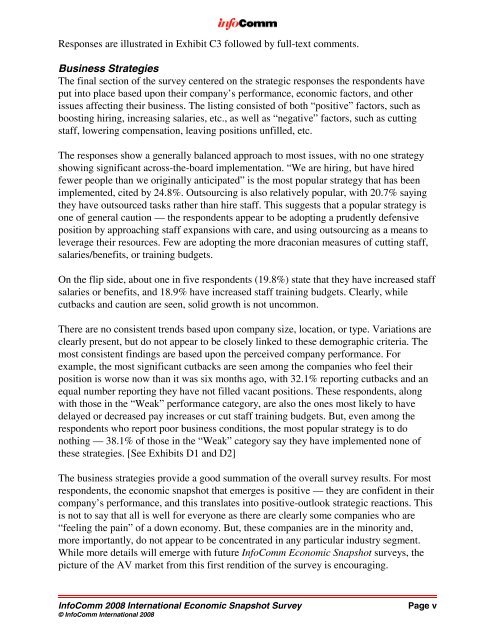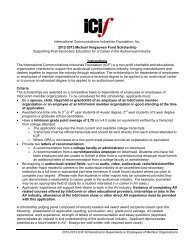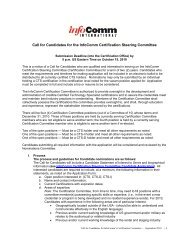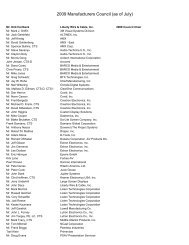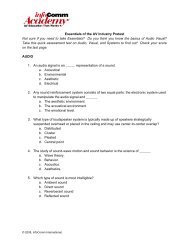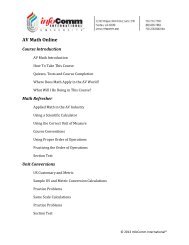September 2008 Economic Snapshot Survey - InfoComm
September 2008 Economic Snapshot Survey - InfoComm
September 2008 Economic Snapshot Survey - InfoComm
You also want an ePaper? Increase the reach of your titles
YUMPU automatically turns print PDFs into web optimized ePapers that Google loves.
Responses are illustrated in Exhibit C3 followed by full-text comments.<br />
Business Strategies<br />
The final section of the survey centered on the strategic responses the respondents have<br />
put into place based upon their company’s performance, economic factors, and other<br />
issues affecting their business. The listing consisted of both “positive” factors, such as<br />
boosting hiring, increasing salaries, etc., as well as “negative” factors, such as cutting<br />
staff, lowering compensation, leaving positions unfilled, etc.<br />
The responses show a generally balanced approach to most issues, with no one strategy<br />
showing significant across-the-board implementation. “We are hiring, but have hired<br />
fewer people than we originally anticipated” is the most popular strategy that has been<br />
implemented, cited by 24.8%. Outsourcing is also relatively popular, with 20.7% saying<br />
they have outsourced tasks rather than hire staff. This suggests that a popular strategy is<br />
one of general caution — the respondents appear to be adopting a prudently defensive<br />
position by approaching staff expansions with care, and using outsourcing as a means to<br />
leverage their resources. Few are adopting the more draconian measures of cutting staff,<br />
salaries/benefits, or training budgets.<br />
On the flip side, about one in five respondents (19.8%) state that they have increased staff<br />
salaries or benefits, and 18.9% have increased staff training budgets. Clearly, while<br />
cutbacks and caution are seen, solid growth is not uncommon.<br />
There are no consistent trends based upon company size, location, or type. Variations are<br />
clearly present, but do not appear to be closely linked to these demographic criteria. The<br />
most consistent findings are based upon the perceived company performance. For<br />
example, the most significant cutbacks are seen among the companies who feel their<br />
position is worse now than it was six months ago, with 32.1% reporting cutbacks and an<br />
equal number reporting they have not filled vacant positions. These respondents, along<br />
with those in the “Weak” performance category, are also the ones most likely to have<br />
delayed or decreased pay increases or cut staff training budgets. But, even among the<br />
respondents who report poor business conditions, the most popular strategy is to do<br />
nothing — 38.1% of those in the “Weak” category say they have implemented none of<br />
these strategies. [See Exhibits D1 and D2]<br />
The business strategies provide a good summation of the overall survey results. For most<br />
respondents, the economic snapshot that emerges is positive — they are confident in their<br />
company’s performance, and this translates into positive-outlook strategic reactions. This<br />
is not to say that all is well for everyone as there are clearly some companies who are<br />
“feeling the pain” of a down economy. But, these companies are in the minority and,<br />
more importantly, do not appear to be concentrated in any particular industry segment.<br />
While more details will emerge with future <strong>InfoComm</strong> <strong>Economic</strong> <strong>Snapshot</strong> surveys, the<br />
picture of the AV market from this first rendition of the survey is encouraging.<br />
<strong>InfoComm</strong> <strong>2008</strong> International <strong>Economic</strong> <strong>Snapshot</strong> <strong>Survey</strong><br />
© <strong>InfoComm</strong> International <strong>2008</strong><br />
Page v


